Author // Emily Rozmus Wednesday, 24 November 2021
Instructional materials matter and looking closely at the materials you use in your classrooms is important. Every Ohio student deserves the opportunity to learn from high-quality, standards-aligned instructional materials to become a resilient, lifelong learner who contributes to society (Each Child, Our Future).
Studies have shown that using high-quality, coherent curriculums and instructional materials leads to student growth in learning and achievement. We also know that students gain months of learning when teachers use high-quality instructional materials.
While securing coherent curriculum and professional development for teachers is the first step in ensuring equity in Ohio’s classrooms, identifying high-quality supplemental materials at grade level for all learners can be helpful in increasing student engagement, meeting diverse needs, and filling instructional gaps.
For over 20 years, INFOhio has been providing Ohio schools and districts with quality supplemental resources available at no cost. INFOhio’s resources provide educators and students with premium, vetted content such as eBooks, videos, lesson plans, instructional web tools, and training and support materials that can be used for teaching and learning. When paired with a high-quality curriculum, these resources can provide additional engaging and innovative materials for student growth and achievement and can scaffold student learning if there are gaps.
While the criteria for high-quality instructional materials is broad, key indicators can be applied to materials to determine their effectiveness for student learning. For this Teach With INFOhio blog series, the premium content provided by INFOhio will be shared, highlighted by its
These are the categories of criteria for the RemotEDx Instructional Materials Rubric, developed by INFOhio's Instructional Team in collaboration with the Ohio Department of Education. EdReports' and Achieve's EQuIP rubrics were models for this tool. You can feel secure knowing that using the instructional materials from INFOhio will provide students with the quality materials they need to be successful and grow as learners.
Today's Science bridges the gap between real-world discoveries and the science classroom—giving in-depth explanations of important advances in biology, chemistry, the environment, space, physics, and technology. This resource from Infobase features more than 6,000 current news articles. These articles along with crossword puzzles, cartoons, questions, and conversations with scientists help place news and scientific discoveries in context. This resource, suitable for students in grades 6-12, is available to all Ohio students, teachers, and parents through funding from the RemotEDx initiative.

Educators can feel secure in using Today’s Science as quality content to supplement curriculums and scaffold learning. Content meets the criteria set by the RemotEDx Instructional Materials Rubric and supports rigor and acceleration in classrooms.
These criteria and indicators help educators identify instructional materials that are aligned with the rigor of the Ohio Learning Standards and rely on research and scientific thinking for best results in the classroom.
Content Builds on Prior Knowledge
Today’s Science content provides an in-depth look at current events in science, building background knowledge through a variety of media sources, including videos, short articles, infographics, and images. In addition, the content bridges the gap between the science curriculum and other content areas. For example, the article When in Ancient Rome, Pass the Olive Oil blends chemistry and anthropology in its exploration of the study of isotopes found in human remains preserved during the eruption of Mount Vesuvius in 79 A.D. Today’s Science’s content is powerful when developing text sets to build comprehension on multiple topics. In addition, each article has Related Articles, connecting learners with content that can help students explore, read, and learn more about topics. The videos and images in the resource provide a variety of approaches for learning about a topic and can support developing comprehension.
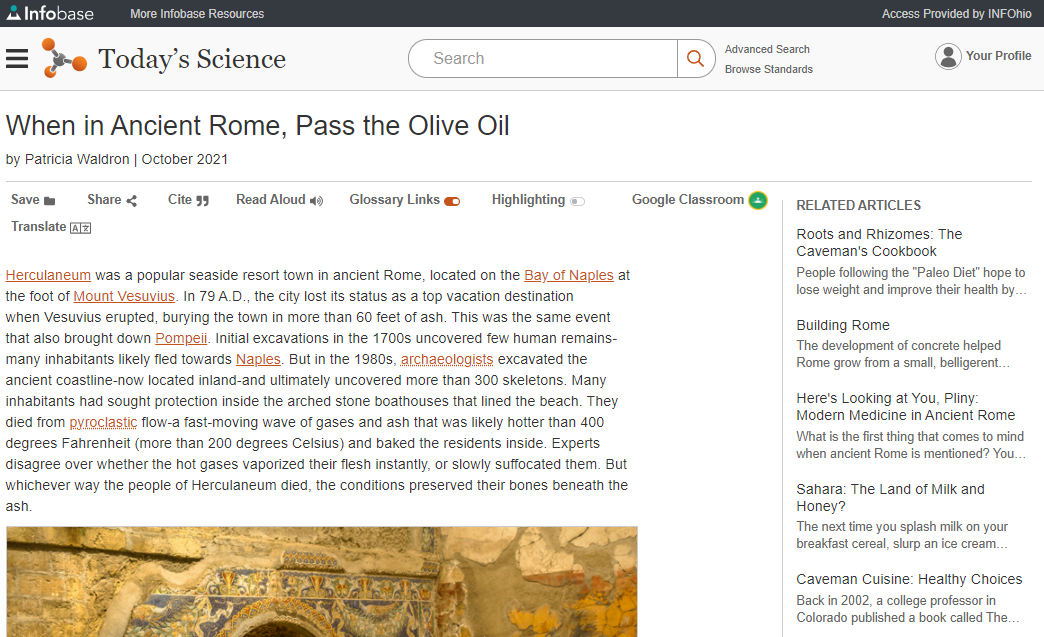
Content Leads to Further Learning by Gradually Removing Supports and Requiring Advanced Skills and Concepts
Articles in Today’s Science have a Filed Under classification to help identify the scientific areas and studies included in the content of the text. Directing students to note the classification and analyze how the text meets those areas can promote connecting new knowledge with knowledge or concepts they already know. This feature is interactive, allowing students to click on the scientific area of study and examine the topic. By doing so, they are transferring knowledge as they recognize contexts operating through similar concepts and arrange that knowledge into parts of a whole.
For example, in the article How Do Cats Get Their Stripes and Spots, the Filed Under categories include the following as shown:
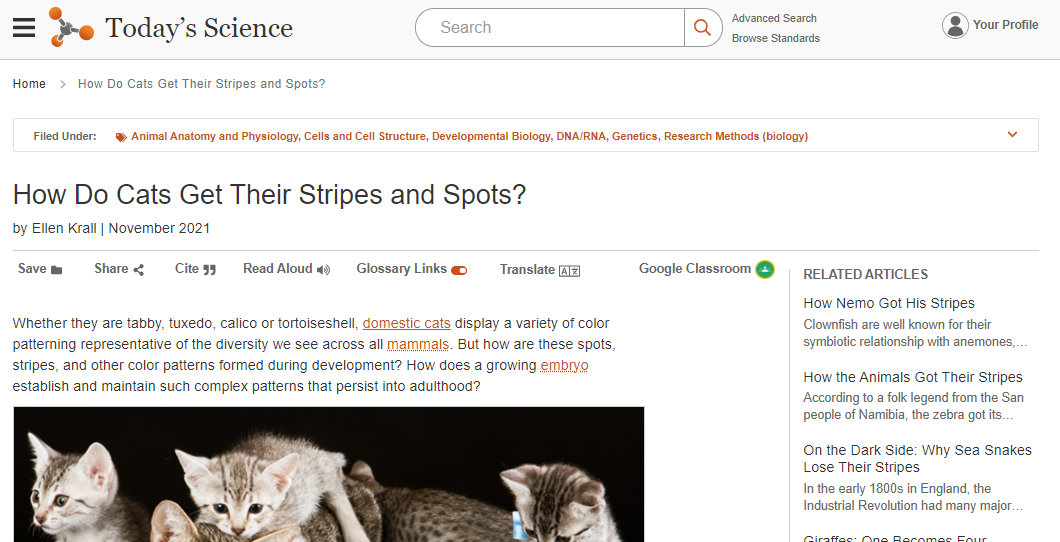
Students can click on each of the areas under the topic of Biology to connect their understanding of the article on cat patterns to other occurrences of this in living organisms and the causes through systems and genetics.
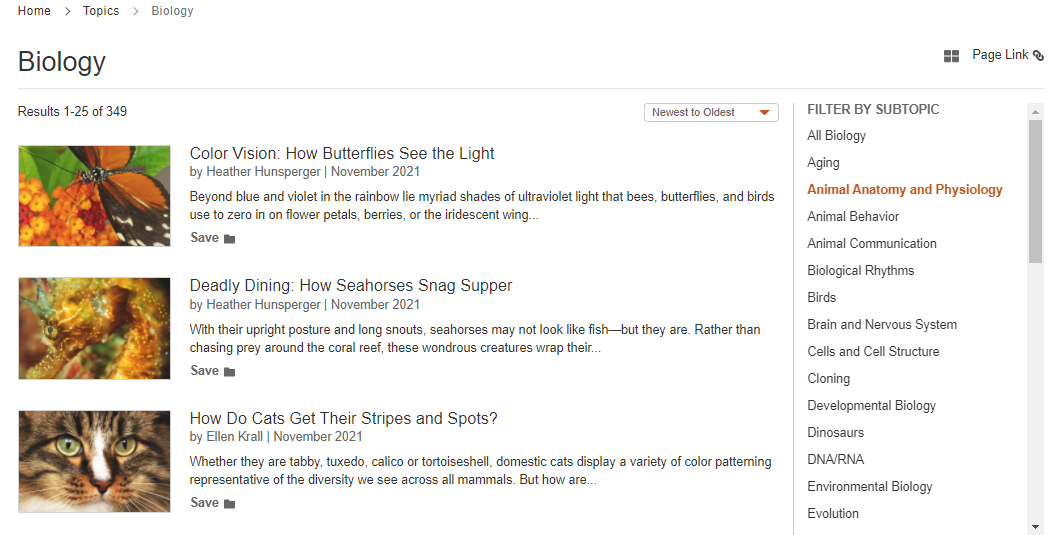
Content Provides for Authentic Learning, Application of Literacy Skills, Student-directed Inquiry, Analysis, Evaluation and/or Reflection
Today’s Science includes opportunities for project-based learning as well. There are several features built into the resource, including student Instructional Supports such as Avoiding Plagiarism, Evaluating Online Sources, and Writing a Research Paper. These short explanatory texts can point learners in the right direction and with teacher facilitation, help students with the inquiry process.
Today's Science is also helpful for students engaging in project-based learning. Research Topics provide an alphabetical list of topics of interest. Students can browse the topics and read the collection of articles to support a topic of interest. The discussion questions help to develop essential questions and locate information. Today’s Science articles include a bibliography with links to journal articles and online magazines. This makes authentic text accessible to student researchers and helps them make connections between different sources of information.

Content Engages Students through Discussion Questions and Other Supports that Build Toward Independence
In addition, the articles, videos, and editorial cartoons encourage curiosity and include opportunities for students to question concepts and apply critical thinking. Today’s Science content features discussion questions for classroom analysis or individual reflection. The editorial cartoon below encourages students to reflect on the content with the questions that follow:

These questions help students develop metacognition and can help them track their learning on a topic to build understanding.
Instructional Approaches Used are Reflective of Best Practices and Research on What Works in Education
Today’s Science content is aligned to Ohio’s Learning Standards. Educators can search by Science standard for grades 6-12 to find content to help support learning.
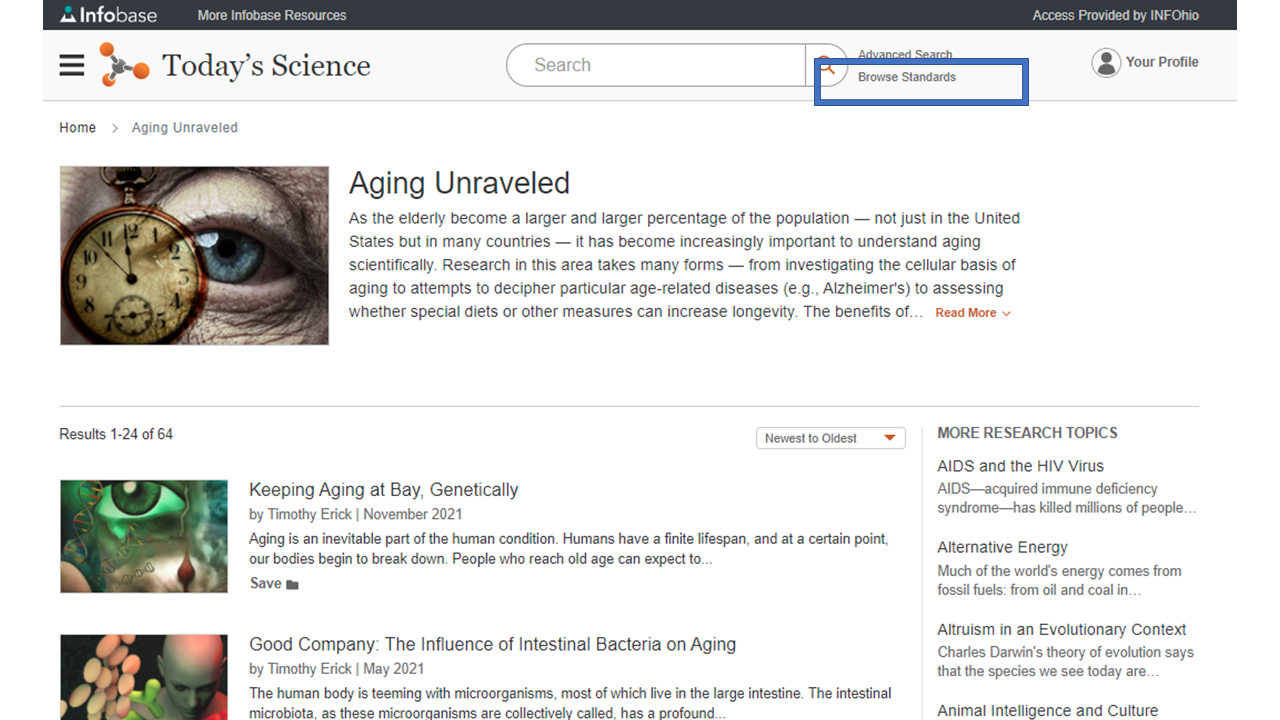

Inclusive teaching emphasizes the strategies and practices educators can use in the classroom to leverage the strengths and tools students of color bring for learning. The criteria and indicators for this category focus on how instructional materials recognize, define, and contribute to the growth and understanding of these strengths.
Content Cultivates an Awareness and Acceptance of a Variety of Ages, Cultures, Races, Religions, and Gender Roles, and Identities
The content in Today’s Science represents many cultures, races, religions, and genders providing an opportunity for students to see themselves. Because of the scientific nature of the resource, students will find factual information about races, cultures, genders, and ages based on studies and research by professionals. Articles on genes and heredity, human history and origins, aging, developmental psychology, and human behavior can all be located easily by browsing All Today’s Science Topics on the resource’s homepage. Below is an image of some of the content available under the topic Psychology and subtopic Developmental Psychology.
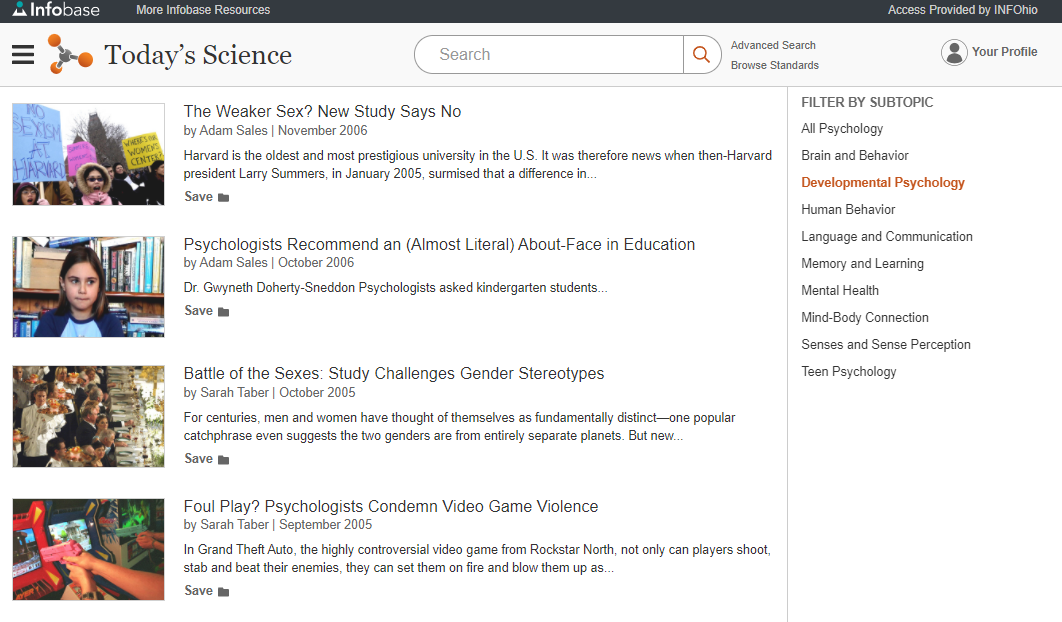
The criteria and indicators for this category ensure that instructional materials provide students and educators with what they need for learning in any form—in person, hybrid, blended, or remote.
Materials Are Flexible To Allow Students To Access and Complete Work Online or Offline as Needed
Several features in Today’s Science allow the majority of content in the material to be saved to be accessed offline. Articles can be printed, saved to a Today’s Science folder (requires an email address), or downloaded. The same quality content comparable in rigor and alignment is present, but the features provide flexibility if internet or device access is not available.

In addition, videos include complete transcripts that can be used to supplement in the event students do not have internet access or a device.
Materials Can Support and/or Facilitate Learning in Hybrid and/or Online Delivery Methods
Quality content from Today’s Science supports the remote or hybrid learning vision and maintains the rigor of instruction. Educators can use links and embed codes provided for articles and videos in learning management systems for ease of access for students.

The resource is also mobile-friendly. Students can read articles or have it read aloud, watch the videos, and answer questions regardless of the type of device they are using. This makes Today’s Science free of reliance on a single educational technology or tool and allows for adaptation to other platforms.

Teacher Supports, Documentation, and/or Guides for Effective Use are Present
Today’s Science has a teacher guide available for the materials to use in different delivery modes. Located on the “i” page for Today’s Science on the INFOhio site, this helpful guide provides educators with opportunities for personalizing learning based on student needs.
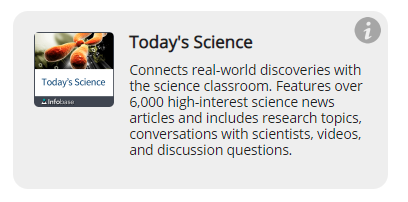
With ideas and suggestions for strategies to use Today’s Science content both in the classroom and at home, the guide will be helpful for educators planning for multiple learners in diverse spaces.
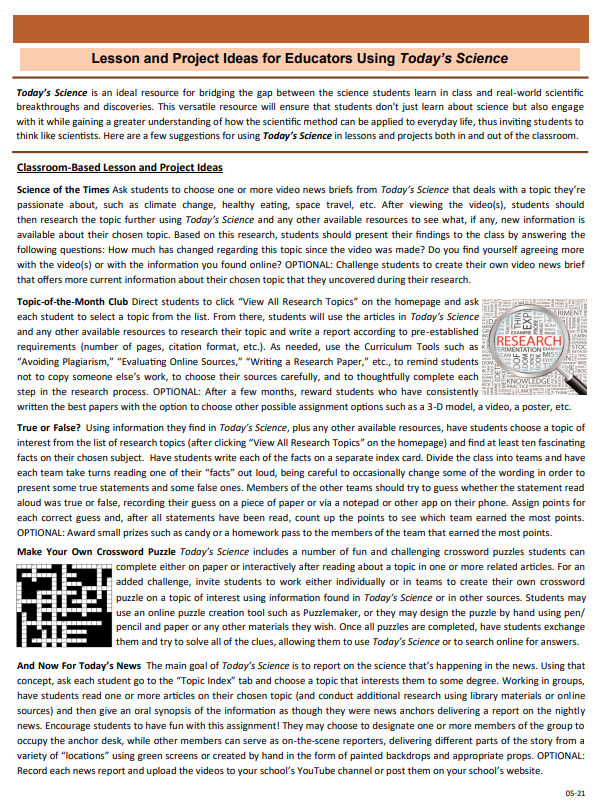
High-quality instructional materials are accessible. These criteria and indicators will help determine how well materials meet the needs of all learners.
Materials follow Web Content Accessibility Guidelines (WCAG)
Images and videos on Today’s Science follow the WCA guidelines with captions on images and transcripts on videos.
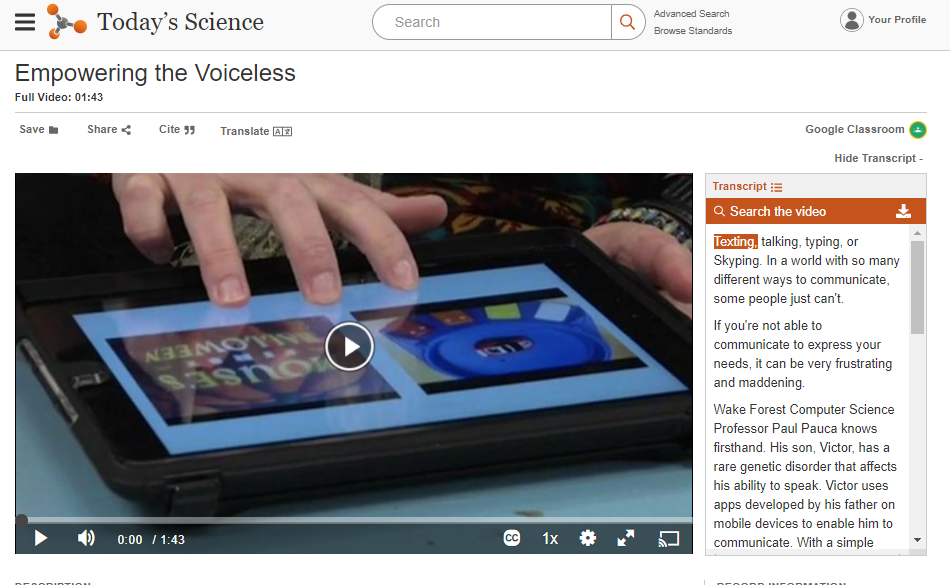
As the video plays, the words spoken are highlighted in the transcript.
Vocabulary words in articles use a variety of indicators other than color to convey important content or meaning. Vocabulary words with definitions available are not only a different color, they are also underlined. Students will be able to distinguish whether or not they can click the word for a definition even if they can’t see colors.

The Visual Design of Materials is Clean and Coherent, Lending Itself to Ease of Learning
Today’s Science articles do an excellent job of highlighting or emphasizing key elements in text, graphics, diagrams, and formulas. As mentioned above, vocabulary words in articles are a different color and underlined. However, if students and educators wish to reduce or eliminate unnecessary distractions and extraneous information, the Glossary Links can be toggled off, removing both the visible emphasis and the physical link to the definition.

With quality, current science news and topics, Today’s Science is a valuable resource for high school students. Try the quality instructional materials it offers available at no cost in your classroom. Be sure to share how #INFOhioWorks for you on social media.
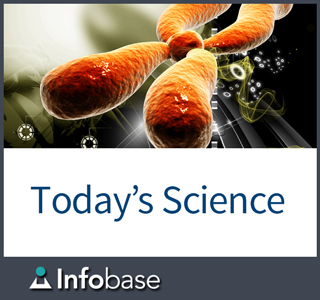
Emily Rozmus is a Senior Instructional Specialist at INFOhio. She has worked in education for over 25 years, first as a secondary English teacher and district librarian before starting at INFOhio in 2013. Emily has developed district growth plans, integrated technology, created instruction for information literacy, fostered teacher development, and worked on teams to implement curriculum. At INFOhio, she focuses on training educators to use INFOhio resources to improve early learning. She also works to share research and best practices for helping students be better readers of INFOhio's digital text.
Fetch is avaiable to INFOhio automated schools. If you are an INFOhio school, please log in with your school username/password using the button at the top-left corner of this page.
For more information about Fetch, please visit the Fetch information page or contact INFOhio support at https://support.infohio.org.